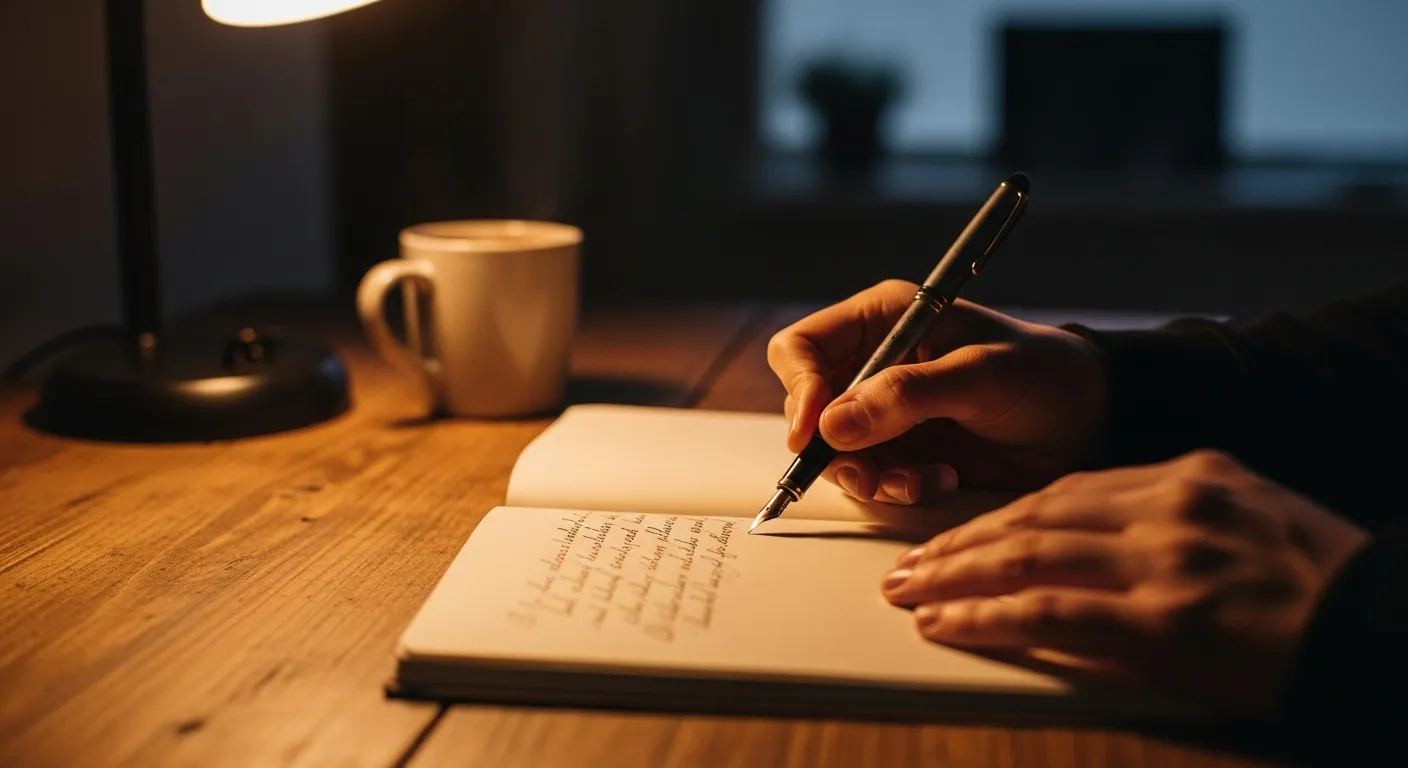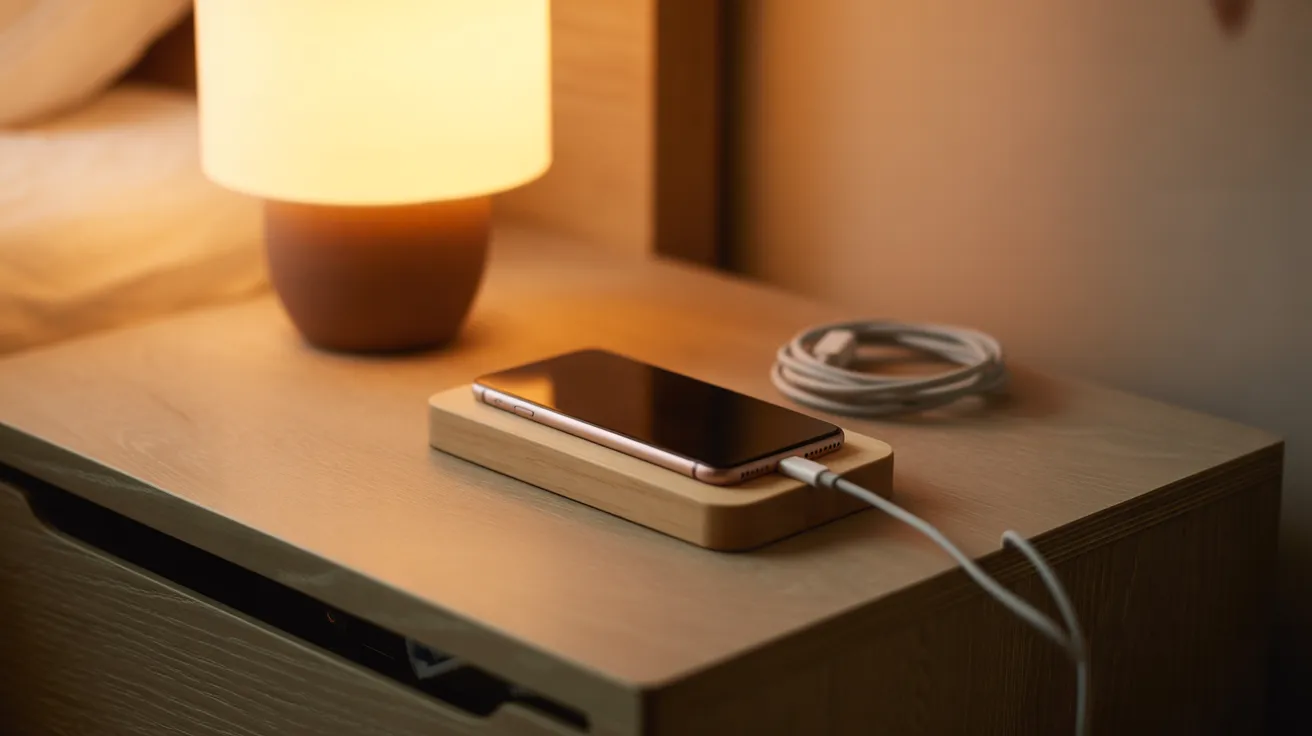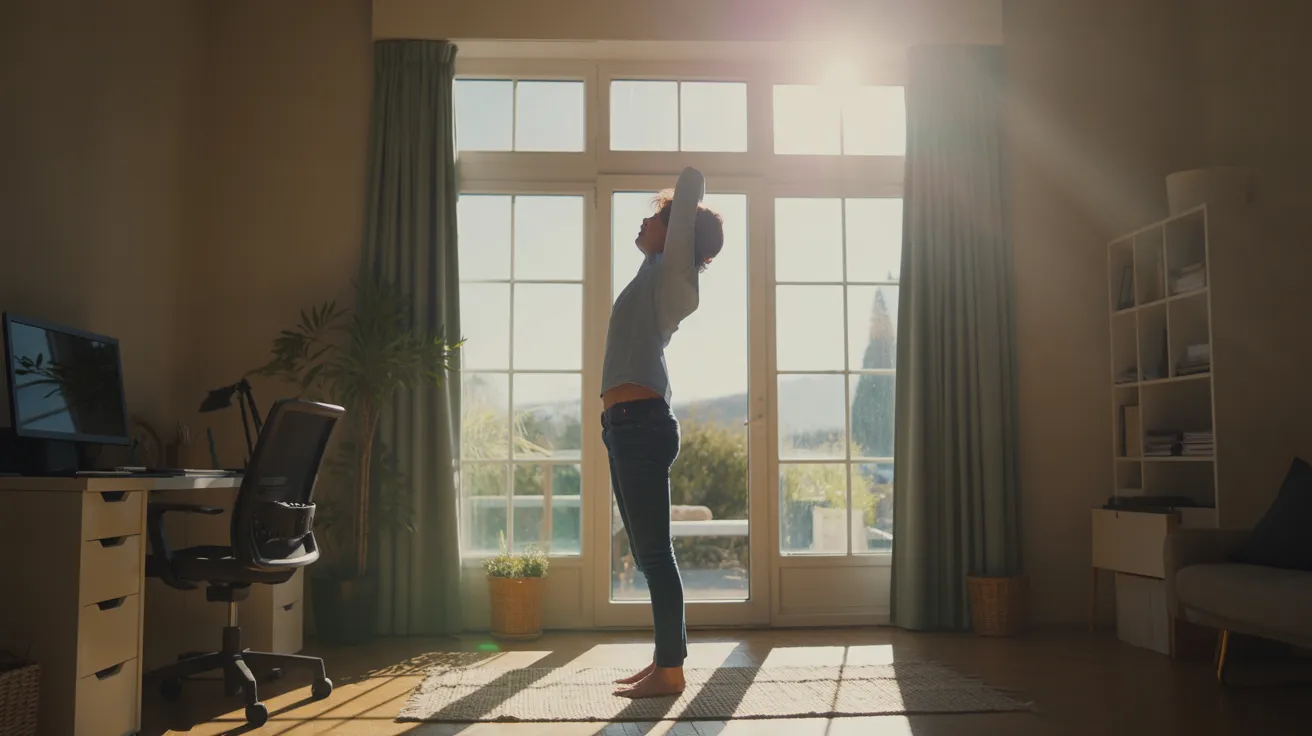
In our hyper-connected world, your smartphone is likely the first thing you see in the morning and the last thing you touch at night. Our devices are indispensable tools for work, connection, and entertainment. Yet, for many of us, they have also become a source of constant distraction, anxiety, and a feeling of being perpetually overwhelmed. The silent hum of notifications, the endless scroll of social feeds, and the pressure to be always available can take a significant toll on our mental health and focus.
The cost of this constant distraction is high. It fragments our attention, making deep, meaningful work feel impossible. It can disrupt our sleep, leaving us tired and irritable. It can even strain our relationships, as we find ourselves giving more attention to a glowing screen than to the people right in front of us. We feel pulled in a dozen directions at once, rarely feeling truly present in any of them.
But what if there was a different way? What if you could transform your relationship with technology from one of passive consumption to one of active intention? This isn’t about abandoning your devices or moving off the grid. This is about digital wellness—a practice of using technology in a way that supports your health, happiness, and goals, rather than detracting from them.
This guide offers a balanced, realistic approach. We won’t ask you to throw your phone away. Instead, we’ll show you how to set up practical boundaries and use the very same technology that distracts you to reclaim your focus, protect your peace, and genuinely boost your well-being. It’s time to take control and make your tech work for you, not the other way around.
📚 Table of Contents
- Understanding the Attention Economy: Why Your Tech Is So Captivating
- Building Mindful Tech Routines
- Creating a ‘Focus Mode’ for Your Phone
- The Art of Notification Triage
- Designing a Minimalist Home Screen
- Using App Timers with Compassion
- Cultivating Supportive Digital Environments
- Establishing Screen-Free Zones and Times
- Crafting a Sleep-Friendly Evening Ritual
- Using Tech as a Cue for Deep Work
- Putting It All into Practice: Two Worked Examples
- Troubleshooting Common Challenges
- Handling ‘Relapse’ Moments
- Navigating Fear of Missing Out (FOMO)
- Managing Social and Professional Expectations
- Frequently Asked Questions About Mindful Tech Use
- 1. How can I use wellness apps without creating more screen time?
- 2. What about privacy concerns with ‘digital wellness’ apps?
- 3. I work night shifts. How do these ‘evening wind-down’ tips apply to me?
- 4. My job requires me to be constantly connected. How can I set boundaries?
- 5. Are there tools to help me manage my children’s screen time as well?
- Your First Steps Toward a Healthier Tech Relationship
Understanding the Attention Economy: Why Your Tech Is So Captivating
Have you ever picked up your phone to check one quick thing, only to look up 45 minutes later, wondering where the time went? If so, you’re not alone. This experience is not a sign of personal failure or a lack of willpower. It is the result of a carefully engineered system designed to capture and hold your most valuable resource: your attention.
We live in what is known as the “attention economy.” In this model, many of the apps and platforms we use are free because we are not the customer—we are the product. Our attention is what’s being sold to advertisers. The more time and engagement they can get from us, the more valuable their platform becomes. To achieve this, these services are built using principles of behavioral psychology to be as compelling and habit-forming as possible.
At the core of this design is a powerful neurological process known as the dopamine loop. Dopamine is a neurotransmitter in your brain associated with pleasure, motivation, and reward. When you do something enjoyable, like eating a delicious meal or receiving a compliment, your brain releases a small hit of dopamine, which makes you feel good and encourages you to repeat the behavior.
Technology companies have become masters at triggering this loop. Think about the features built into your favorite apps: the “like” button on a social media post, the satisfying “pull-to-refresh” gesture that reveals new content, the red notification badges that signal something new and exciting awaits. Each of these is a variable reward. You never know if the next refresh will bring a mundane update or an exciting piece of news, and this unpredictability is what makes it so addictive. Your brain craves the potential reward, compelling you to check, scroll, and click, again and again.
For adults living busy lives, especially in urban environments, these patterns become deeply ingrained in our daily routines. We scroll through news feeds while waiting for the train, check work emails while in line for coffee, and browse shopping apps to decompress after a long day. Our phones have become our constant companions, filling every spare moment with a potential dopamine hit. This constant stimulation keeps our brains in a state of high alert, making it difficult to relax, be bored, or engage in deep thought—all of which are crucial for creativity and mental well-being. Understanding this mechanism is the first step toward reclaiming your agency. It’s not about fighting your biology; it’s about creating an environment where your biology isn’t constantly being hijacked.

Building Mindful Tech Routines
Once you understand the forces competing for your attention, you can start to build intentional routines that put you back in the driver’s seat. The goal is not to fight against your tools but to reconfigure them to serve your intentions. A few deliberate adjustments to your daily habits can create a profound shift in your focus and peace of mind. This is where the practice of using mindful tech tools comes into play—often using the built-in features of your devices to protect you from the very distractions they enable.
Creating a ‘Focus Mode’ for Your Phone
Most modern smartphones come equipped with powerful “Focus” or “Digital Wellbeing” features. These are more than just a simple “Do Not Disturb” setting; they are customizable modes that allow you to define what apps and people can reach you at certain times. Think of them as creating different mindsets for your phone that align with your life.
You could create a “Deep Work” mode that blocks all notifications except for calls from your boss or family. You could design a “Personal Time” mode for evenings and weekends that silences work-related apps like Slack and email. A “Wind-Down” mode for the hour before bed could restrict everything except your meditation app or audiobook player. By automating these modes based on time of day, location, or calendar events, you create frictionless boundaries that protect your attention without requiring constant willpower.
The Art of Notification Triage
Every buzz, ping, and banner that appears on your screen is a tiny interruption. Each one pulls you out of your current state of mind and forces a context switch, which drains mental energy. The solution is to move from a reactive to a proactive relationship with your notifications through a process of triage and batching.
Start by performing a notification audit. Go into your phone’s settings and look at the list of apps that are allowed to send you notifications. For each app, ask yourself: “Is it truly urgent and important for me to receive this information instantly?” The answer for most apps—social media, news, shopping, games—will be a resounding no. Be ruthless. Turn off all non-essential notifications at the system level.
For the notifications that remain, practice notification batching. This is the simple habit of checking and responding to notifications at scheduled times throughout the day, rather than as they arrive. For example, you might decide to check your email and messages at 10:00 AM, 1:00 PM, and 4:00 PM. This allows you to engage in long, uninterrupted stretches of focused work or be fully present in your offline life. It transforms notifications from a constant stream of interruptions into a predictable, manageable task.
Designing a Minimalist Home Screen
Your phone’s home screen is prime real estate. If it’s cluttered with distracting, dopamine-triggering apps, you are setting yourself up for mindless scrolling every time you unlock your device. A well-designed home screen, on the other hand, can be a tool for intention and focus.
The first step is to remove all “infinity pool” apps—those with endless feeds, like social media, news, and email—from your home screen. Move them into a folder on a secondary screen. This simple act of adding friction—requiring an extra swipe and a tap to open the app—can be surprisingly effective at breaking the habit of mindless checking. It gives you a crucial moment to pause and ask, “Do I really want to open this right now?”
Instead, populate your home screen with utility-based tools that help you accomplish specific tasks: your calendar, a notes app, your camera, or a weather app. Think of it as transforming your phone from a slot machine into a Swiss Army knife. It becomes a tool you use with purpose, not a device that uses you for engagement.
Using App Timers with Compassion
App timers are another powerful feature built into most smartphones. They allow you to set daily time limits for specific apps or categories of apps. When you reach your limit, the app icon is grayed out, and you receive a notification. The key to using these effectively is to approach them with compassion, not as a form of self-punishment.
If you currently spend two hours a day on a particular app, don’t set a limit of 15 minutes. You’ll likely just ignore it and feel frustrated. Instead, start with a more realistic limit, perhaps 90 minutes. The goal is not to achieve a perfect record but to increase your awareness. The timer acts as a gentle tap on the shoulder, reminding you of your intention to be more mindful of your time. Over time, as you become more aware of how you’re spending your digital minutes, you can gradually adjust the timers to better align with your values.

Cultivating Supportive Digital Environments
Building a healthier relationship with technology for wellness extends beyond the settings on your device. It involves shaping your physical environment to support your intentions. Just as an architect designs a physical space to influence how people feel and behave, you can design your personal spaces—your home, your office—to encourage more mindful tech habits. By creating clear physical boundaries, you make it easier for your brain to switch gears and be fully present in the moment.
Establishing Screen-Free Zones and Times
One of the most powerful changes you can make is to designate certain areas of your home as screen-free zones. The most important of these is the bedroom. Your bedroom should be a sanctuary for rest and intimacy, but for many, it has become another office or entertainment hub. When you bring your phone to bed, you bring with it the endless potential for work stress, social comparison, and stimulating content, all of which are antithetical to sleep.
Make a firm rule: no screens in the bedroom. Invest in an old-fashioned alarm clock and charge your phone overnight in another room, like the kitchen or living room. This single change can dramatically improve your sleep quality and your morning routine, as you’ll no longer be tempted to start your day by scrolling through a backlog of notifications and news.
The dinner table is another excellent candidate for a screen-free zone. When you put phones away during meals, you create space for genuine connection with family or partners. It signals that the people in front of you are your priority. These small, consistent boundaries can have a surprisingly large impact on the quality of your relationships and your overall sense of well-being.
Crafting a Sleep-Friendly Evening Ritual
The science is clear: the light from our screens can interfere with our natural sleep cycles. Our devices emit a high concentration of blue light, a specific wavelength of light that our brains interpret as daylight. Exposure to blue light in the evening can suppress the production of melatonin, the hormone that tells your body it’s time to sleep. According to organizations like the Sleep Foundation, this can make it harder to fall asleep and reduce the quality of the sleep you do get.
To counteract this, create a tech-free “wind-down” period for 60 to 90 minutes before you plan to go to sleep. During this time, put your devices away and engage in relaxing, non-screen activities. You could read a physical book or e-reader (most have a warm light setting that emits less blue light), listen to a calming podcast or music, do some light stretching, or journal about your day. This ritual not only avoids the disruptive effects of blue light but also helps to quiet your mind, signaling to your body that it’s time to transition from the activity of the day to a state of rest.
Using Tech as a Cue for Deep Work
While we often focus on how tech hinders focus, we can also strategically use it as a powerful cue to initiate periods of deep work. The key is to associate a specific technological action with the mental state you want to achieve. This is about leveraging mindful tech to your advantage.
For example, the act of putting on a pair of noise-canceling headphones can become a powerful psychological trigger that tells your brain, “It’s time to focus now.” Setting your phone to DND, which stands for “Do Not Disturb,” and placing it face down, out of sight, can serve a similar purpose. This simple action creates a clear boundary between you and the outside world of digital distractions.
You can also use specific apps as focus triggers. Opening a minimalist writing application, starting a Pomodoro timer, or playing a specific ambient soundscape can all serve as rituals that help you transition into a state of concentration. By consistently using these tech-based cues, you train your brain to associate them with productivity, making it easier to drop into a flow state when you need to.

Putting It All into Practice: Two Worked Examples
Theory is valuable, but practical application is where real change happens. Understanding the concepts of digital wellness is one thing; integrating them into the fabric of your busy life is another. To make these ideas more concrete, here are two step-by-step examples of how you can implement these strategies in a realistic, manageable way. These aren’t rigid prescriptions but flexible templates you can adapt to your own lifestyle.
Example 1: A 10-Minute Evening Wind-Down
The goal of this routine is to create a clear, simple transition from your digitally-saturated day to a restful night, improving your sleep quality and reducing evening anxiety. This entire process takes only a few minutes but can have a significant impact.
Step 1 (e.g., at 9:30 PM): Set an alarm on your phone labeled “Start Wind-Down.” When it goes off, this is your cue. Immediately enable your pre-configured “Sleep” or “Wind-Down” focus mode. This will silence all non-critical notifications and visually change your phone’s screen, signaling a shift in purpose.
Step 2: Walk your phone to its designated charging spot for the night, which should be outside of your bedroom. Plug it in. This physical act of separation is crucial. By leaving it in another room, you remove the temptation to check it “one last time” from your bed.
Step 3: Prepare your environment for sleep. Dim the lights in your bedroom and any rooms you’ll be in. If you plan to read, use a soft, warm lamp rather than a bright overhead light. This helps your body’s natural melatonin production.
Step 4: Engage in a chosen non-screen activity for at least 10 minutes. This could be anything that you find calming. You might read a few pages of a novel, listen to a chapter of an audiobook, write down three things you were grateful for during the day, or do a few gentle stretches. The specific activity is less important than the consistency of the ritual. This simple, tech-free routine becomes a powerful signal to your brain that the day is over and it’s time to rest.
Example 2: A Realistic Weekend Digital Detox
The idea of a “digital detox” can be intimidating, often conjuring images of completely abandoning technology for days on end, which is impractical for most people. A more sustainable approach is a “digital reset”—a series of small, intentional breaks from technology to help you reconnect with the world and yourself.
Saturday Morning: The ‘Naked’ Walk. When you go out for a walk, a coffee, or to run a small errand, consciously leave your phone at home. At first, you may feel a sense of unease or phantom vibrations. Notice that feeling without judgment. Pay attention to your surroundings instead. What do you see, hear, and smell? This practice helps you realize that you can, in fact, exist and navigate the world for short periods without a digital tether.
Saturday Afternoon: The ‘App Fast’. Choose one of your most-used, time-consuming apps (like Instagram, TikTok, or a news aggregator). Delete it from your phone for the rest of the weekend. Don’t just log out; remove the app entirely. This adds enough friction that you’re unlikely to reinstall it on a whim. Observe how many times you instinctively reach for it. What do you do with that time instead? This isn’t about punishing yourself but about gathering data on your own habits.
Sunday: The ‘Intention Block’. Schedule a three-to-four-hour block of time where you commit to being “single-tasking.” If you’re reading a book, just read the book. If you’re cooking, just cook. If you’re with family, be fully present. During this block, your phone is put away and only checked for urgent calls if necessary. This exercise helps rebuild your “attention muscle,” which atrophies from constant digital multitasking. You can reinstall your deleted app on Sunday evening or Monday morning, but you’ll do so with a newfound awareness of its role in your life.

Troubleshooting Common Challenges
Embarking on a journey toward digital wellness is a process filled with progress and occasional setbacks. It’s perfectly normal to encounter challenges along the way. The key is to anticipate them and approach them with self-compassion rather than criticism. Recognizing these hurdles as part of the process will help you stay the course and build a resilient, long-term practice of mindful tech use.
Handling ‘Relapse’ Moments
You will have moments, or even entire days, where you fall back into old habits. You might find yourself scrolling mindlessly for an hour, checking your email obsessively, or staying up too late watching videos. This is not a failure; it is a data point. The all-or-nothing mindset is the enemy of sustainable change.
When you notice you’ve slipped, the most important thing is to avoid shame or guilt. That inner critic will only make it harder to get back on track. Instead, practice mindful awareness. Simply notice what happened: “I just spent an hour on social media and now I feel drained.” Acknowledge the feeling without judgment. Then, gently guide yourself back to your intention. You can reset at any moment. The day isn’t ruined. Just put the phone down and take one small step in the right direction, like going for a short walk or turning off notifications for the next hour. Progress is not linear.
Navigating Fear of Missing Out (FOMO)
One of the strongest psychological hooks of modern technology is the Fear of Missing Out, or FOMO. Social media platforms are designed to make you feel that if you’re not constantly connected, you’ll miss an important update, a viral trend, or a social invitation. This feeling can create significant anxiety when you try to disconnect.
A helpful way to counter this is to reframe it as JOMO: the Joy of Missing Out. Embrace the peace and freedom that come from not having to keep up with every single thing. Remind yourself that your mental energy is a finite resource, and by choosing to miss out on trivial online updates, you are choosing to be more present for the things that truly matter in your own life. You can also curate your digital environment to reduce FOMO. Unfollow accounts that make you feel inadequate or anxious. Mute group chats that are more noise than signal. A well-curated feed that is inspiring and educational, rather than competitive and overwhelming, is a powerful tool for tech for wellness.
Managing Social and Professional Expectations
Sometimes the biggest barrier to setting tech boundaries is the expectation from others. A boss might expect an immediate reply to an email sent at 8 PM. Friends might wonder why you didn’t instantly “like” their photo. Navigating these expectations requires clear and proactive communication.
You don’t need to over-explain, but simple, clear statements can manage expectations effectively. For your professional life, you might add a line to your email signature like, “I check emails between 9 AM and 5 PM. For urgent matters, please call.” This sets a clear boundary. You can also block “focus time” in your shared work calendar to signal to colleagues that you are unavailable for interruptions.
In your personal life, a simple explanation can go a long way. “I’m trying to be more present when I’m with people, so I’m putting my phone away during dinner.” Most people will understand and may even be inspired by your example. It’s about communicating that your actions are driven by a positive intention—to be more focused and present—rather than a desire to ignore others. Leading by example is often the most effective way to shift a culture, whether it’s in your family or your workplace.

Frequently Asked Questions About Mindful Tech Use
As you begin to implement these strategies, questions and unique situations will naturally arise. Here are answers to some of the most common queries we hear from people trying to build a healthier relationship with their technology.
1. How can I use wellness apps without creating more screen time?
This is a common paradox. The key is to use these apps with surgical intention. A meditation, fitness, or journaling app can be a powerful mindful tech tool. The strategy is to “get in and get out.” Open the app, complete your intended activity (e.g., a 10-minute meditation), and then close it immediately. Avoid the temptation to browse other features or check notifications within the app. Using app timers can be helpful here; set a short limit for your wellness app to remind you to use it for its core purpose and nothing more.
2. What about privacy concerns with ‘digital wellness’ apps?
This is a very valid concern. Your data is precious. The best place to start is with the digital wellness tools built directly into your phone’s operating system (like Apple’s Screen Time or Google’s Digital Wellbeing). These are generally more privacy-focused. If you choose to use third-party apps, do your research. Read their privacy policy to understand what data they collect and how they use it. Prioritize apps that process data on-device rather than sending it to the cloud. Reputable apps will be transparent about their data practices.
3. I work night shifts. How do these ‘evening wind-down’ tips apply to me?
The principles of a healthy wind-down are universal, even if your schedule is not. The goal is to create a transition period before sleep, whenever your “night” may be. Your “evening wind-down” is simply your pre-sleep ritual. An hour or two before you plan to sleep, stop using screens, dim the lights, and engage in a relaxing activity. The biggest challenge for shift workers is often light. Invest in blackout curtains and a sleep mask to create a dark environment that signals to your brain that it’s time to rest. The Sleep Foundation offers excellent resources specifically for shift workers navigating sleep challenges.
4. My job requires me to be constantly connected. How can I set boundaries?
This is a tough but common situation. Focus on what you can control. Even in a demanding job, you can likely carve out small pockets of focused time. Use notification batching for less critical communication channels like secondary Slack channels or email. Block out “deep work” sessions in your shared calendar so colleagues know not to disturb you. Perhaps most importantly, have a conversation with your manager about expectations. Frame it around productivity: “I’ve found I do my best work when I can focus without interruption for a 90-minute block. I’ll be turning off notifications during those times but will be available for anything urgent via a call.”
5. Are there tools to help me manage my children’s screen time as well?
Yes, most devices and platforms offer robust parental controls that allow you to set time limits, filter content, and monitor usage. These are helpful tools. However, research from organizations like the American Psychological Association suggests that the most effective approach combines these tools with open communication and modeling. Talk to your children about why these boundaries are important. Create a family tech plan together. And most of all, model the healthy habits you want them to adopt. When they see you putting your phone away at dinner, they are much more likely to do the same.

Your First Steps Toward a Healthier Tech Relationship
Transforming your relationship with technology is not about a single, dramatic overhaul. It’s about a series of small, intentional, and consistent choices that, over time, add up to a significant change in your focus, presence, and overall well-being. You don’t have to implement every strategy in this guide at once. The best way to start is by picking a few small changes that feel manageable and resonant for you right now.
The journey to digital wellness is a marathon, not a sprint. It’s about moving from a state of passive reaction to one of conscious intention. It’s about remembering that your devices are tools, and you are the one who decides how they are used. By being more mindful, you can harness the incredible power of technology for wellness, connection, and productivity without paying the price of your peace of mind.
Here are three small, actionable changes you can adopt this week to begin your journey:
1. Pick One App, Turn Off Its Notifications. Choose your single most distracting social media or news app. Go into your settings right now and disable all of its notifications—banners, sounds, and badge icons. Notice how it feels to open the app on your own terms, not because it beckoned you.
2. Redesign Your Home Screen Tonight. Before you go to bed, take five minutes to clean up your phone’s home screen. Move your top 3-4 most distracting apps into a folder on the second page. Replace them with tools that support your goals, like a calendar, a notes app, or a meditation app.
3. Charge Your Phone Outside Your Bedroom. Make this one non-negotiable change tonight. Find a spot in your living room or kitchen to be your phone’s new overnight home. This single act creates a powerful physical boundary that will benefit your sleep and your morning routine immensely.
Start with these. Be curious about what you notice. And remember to be patient and compassionate with yourself along the way. You are reclaiming your most valuable asset—your attention—one intentional choice at a time.
Disclaimer: The information provided in this article is for informational purposes only and is not intended as a substitute for professional medical or psychological advice, diagnosis, or treatment. Always seek the advice of your physician or other qualified health provider with any questions you may have regarding a medical condition or mental health concerns.






